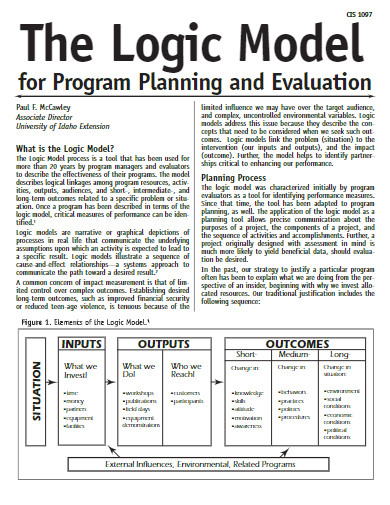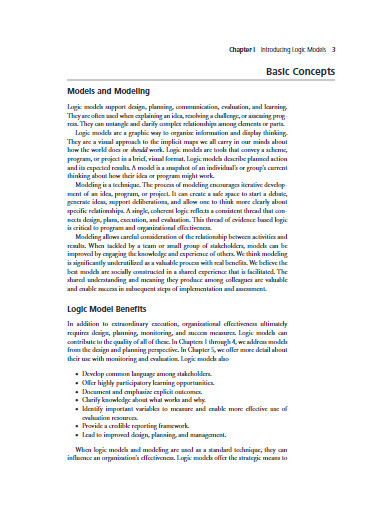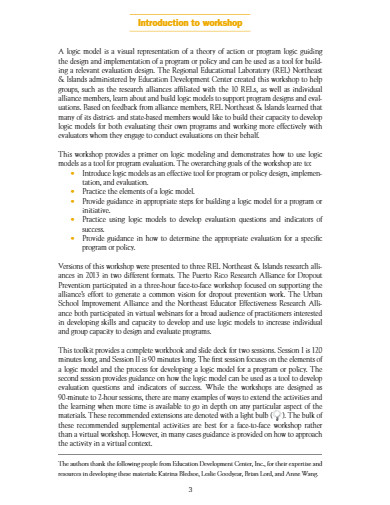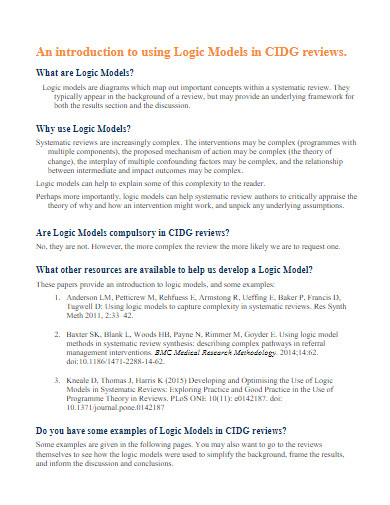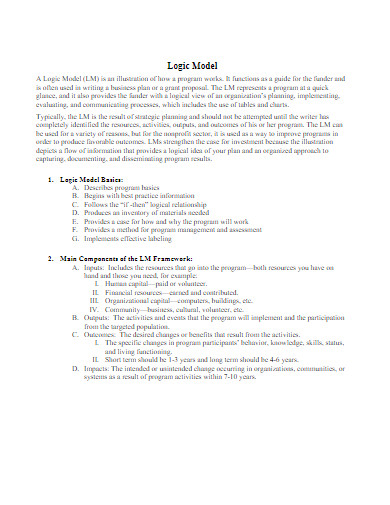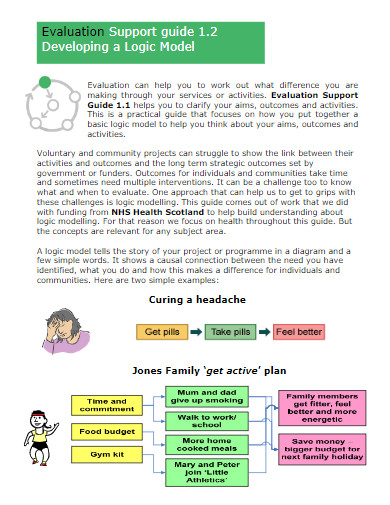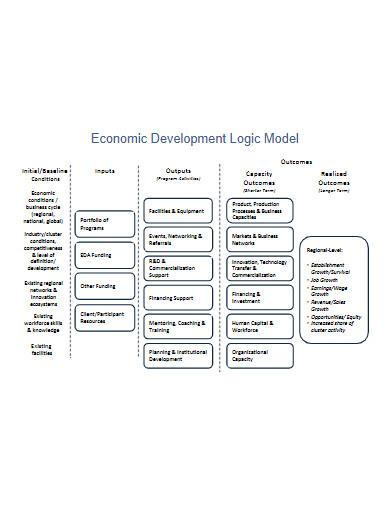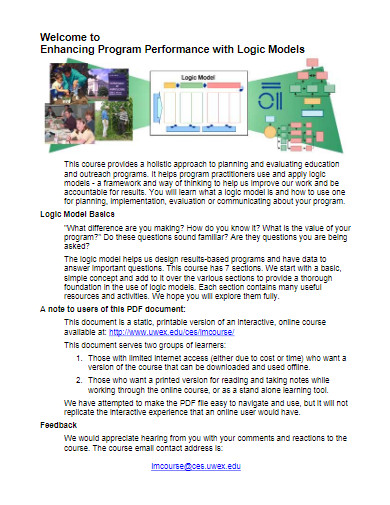10+ Logic Model Examples to Download
The construction and application of a logic model is a significant step in determining how evidence-based decision-making (EBDM) will operate in a particular jurisdiction. A logic model can help develop shared understandings of what resources are usable, what processes and changes will occur, what these behaviors and changes will accomplish, and what the initiative’s intended long-term impacts will be.
If you want to know more regarding the logic model, here are sample templates and guidelines that can help:
10+ Logic Model Examples in PDF
1. Program Logic Model
2. Logic Model Template
3. Sample Logic Model
4. Logic Models for Program
5. Developing Logic Models
6. Logic Model Example
7. Basic Logic Model
8. Logic Model in PDF
9. Economic Development Logic Model
10. Simple Logic Model
11. Research Logic Model
What Is a Logic Model?
Logic models are graphical representations of knowledge and thought. They are a visual representation of the subconscious maps that people have in their heads on how the universe works or could work. Logic models are methods for communicating a scheme, application, or project in a concise, visual manner. Logic models explain anticipated actions and predicted outcomes. A model captures an individual’s or group’s current thoughts about how their concept or program could function.
How to Create a Logic Model?
Logic models serve as an essential basis for estimation and will indicate which data would be more valuable to obtain. They support a company in determining appropriate process benchmarks to determine if it’s engaging the customers it needs to reach and do as it claims to be doing. Furthermore, logic models help identify the indicators that define whether policies and programs are actively leading to the intended outcomes and objectives.
There are several ways to visualize a logic model, but the simple linear structure shown below is the best place to start.
1. Begin With Activities
When software already exists, begin by specifying the main tasks. What happens in this program? What should you do in society to make a difference? List all of the main events. Also, include any smaller ones if you’re unsure if they are needed or not.
2. Proceed to Outputs, then Outcomes.
Next, describe the results and consequences of each activity. Any action should have outputs and outcomes that are directly related to it. Also, always number the tasks and the associated outputs and outcomes to demonstrate a direct link between the three. Since inputs and impacts are more common, you should not include them in the same numbering scheme.
3. Determine the Impacts
When you’ve documented the actions, outputs, and effects, consider the cumulative impacts these activities will produce. These should be consistent with the organization’s mission, vision, and overall direction.
4. Keep Track of Your Resources
Finally, assess the resources you’ll need to complete the projects and create the desired changes in culture. These will help you discover that you need more money than you currently have, which will help you focus your capacity-building and fundraising efforts.
FAQs:
What is the role of a logic model?
A logic model is a graphical representation of a program’s capital, operations, and anticipated outcomes. Anyone can use this during program design, execution, and assessment to simplify dynamic relationships between different components.
What exactly are the components of a logic model?
In logic models, you will use the method and result elements. The program’s priorities, process, and outcomes should provide material for the reasoning model’s process and outcome elements, and vice versa.
What characteristics distinguish a solid logic model?
Effective logic models provide a clear statement of the actions that can bring about transformation and the outcomes you plan for the society and its residents. By having a shared vocabulary and point of reference, a reasoning paradigm keeps participants in the initiative going in the same direction.
The actions taken to achieve program goals are necessary not only to the program manager and staff. However, it’s also essential to sponsors and others who may wish to collaborate on similar projects in the future. As a result, create a point of documenting program steps as they occur during execution. It is much easier to record them as the curriculum continues rather than struggling to recall them all after everything is complete. So, it’s vital to save the given logic model templates and guidelines for future reference.



